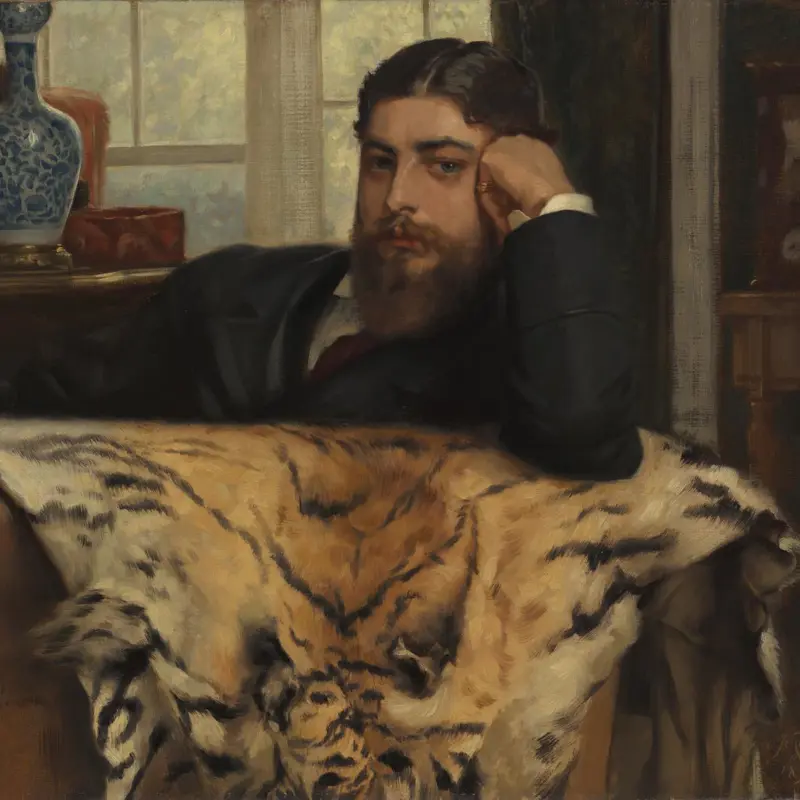Born Jacques Joseph Tissot in the port city of Nantes, Tissot grew up the son of a milliner and dressmaker. From 1847 he took on the name James as an expression of his admiration for English culture. In 1856 he moved to Paris to enrol at the Ecole des Beaux-Arts and from 1859 onwards exhibited regularly at the Paris Salon to critical acclaim. His early work principally focused on genre paintings drawing on subject matter inspired by the Middle Ages and the Directoire period of Napoleon Bonaparte’s reign (1795–99). From the 1860s onwards he turned to portraying modern scenes of contemporary urban life. His images of leisurely life of the elegant and well-dressed upper classes of London and Paris, for which he became most well-known, demonstrate his precise and sumptuous rendering of fabric and dress. Implicated in the events of the Paris Commune, he fled to London in 1871 where he integrated himself in the circle of James Abbott McNeill Whistler, Lawrence Alma-Tadema and John Everett Millais. Soon establishing himself as one of the leading artists of the Aesthetic movement, he continued to exhibit regularly at London’s Royal Academy, though his success in London was often viewed with consternation by his French counterparts such as Edgar Degas and Berthe Morisot. Tissot’s creative output also included cloisonné enamels and printmaking and his late work was devoted to illustrating the Life of Christ and the Old Testament.
Jacques Joseph (James) Tissot
1836 - 1902

